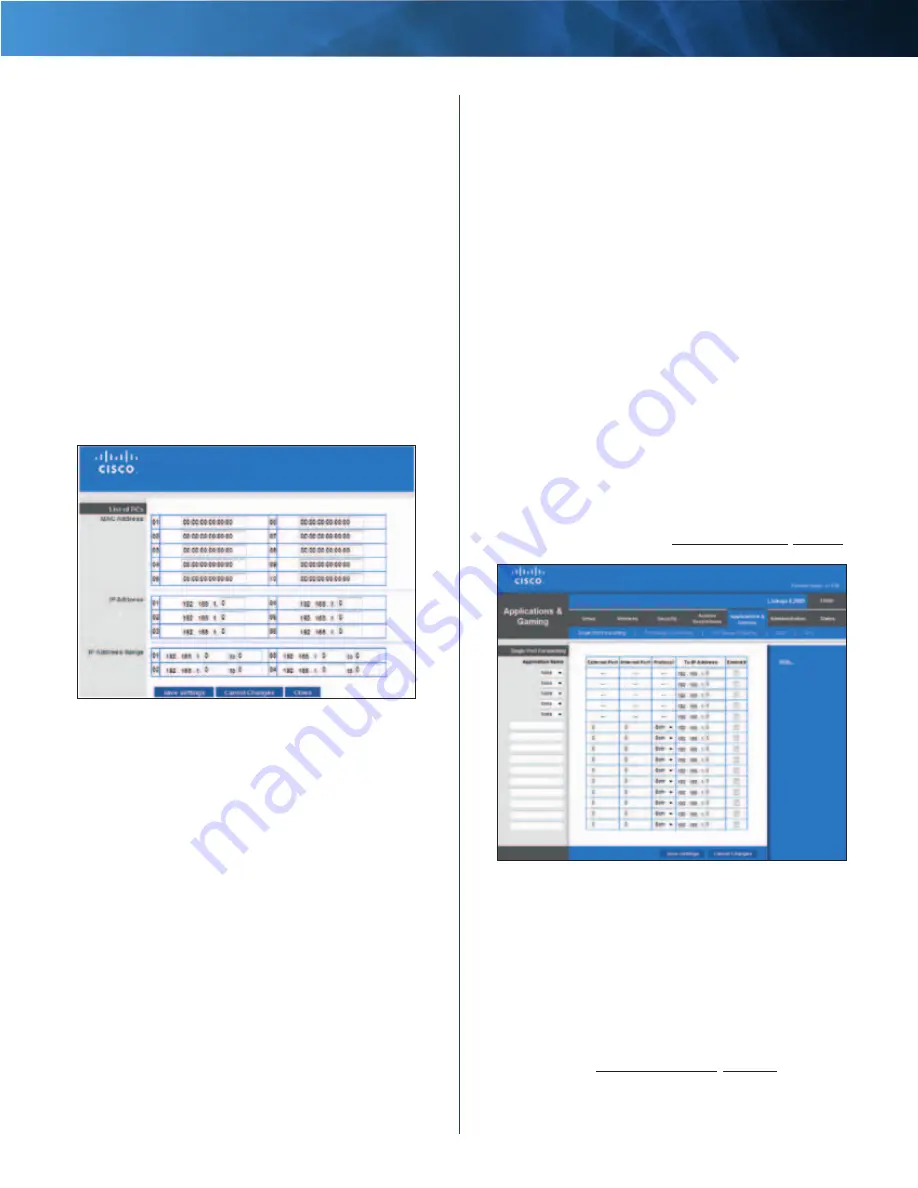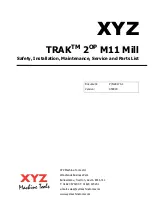
29
Advanced Wireless-N Router
Linksys E2000
Chapter 3: Advanced Configuration
Status
Policies are disabled by default . To enable a policy,
select the policy number from the drop-down menu, and
select
Enabled
.
To create a policy, follow steps 1-11 . Repeat these steps to
create additional policies, one at a time .
1 . Select a number from the
Access Policy
drop-down
menu .
2 . Enter a Policy Name in the field provided .
3 . To enable this policy, select
Enabled
.
4 . Click
Edit List
to select which computers will be affected
by the policy . The
List of PCs
screen appears . You can
select a computer by MAC address or IP address . You
can also enter a range of IP addresses if you want this
policy to affect a group of computers . After making your
changes, click
Save Settings
to apply your changes, or
click
Cancel Changes
to clear your changes . Then click
Close
.
List of PCs
5 . Select the appropriate option,
Deny
or
Allow
,
depending on whether you want to block or allow
Internet access for the computers you listed on the
List
of PCs
screen .
6 . Decide which days and what times you want this
policy to be enforced . Select the individual days during
which the policy will be in effect, or select
Everyday
.
Then enter a range of hours and minutes during which
the policy will be in effect, or select
24 Hours
.
7 . You can block websites with specific URL addresses .
Enter each URL in a separate
Website Blocking by URL
Address
field .
8 . You can also block websites using specific keywords .
Enter each keyword in a separate
Keyword
field .
9 . You can filter access to various services accessed over
the Internet, such as FTP or telnet . (You can block up to
three applications per policy .)
From the Applications list, select the application you
want to block . Then click the
>>
button to move it to
the Blocked List . To remove an application from the
Blocked List, select it and click the
<<
button .
10 . If the application you want to block is not listed or you
want to edit a service’s settings, enter the application’s
name in the
Application Name
field . Enter its range
in the
Port Range
fields . Select its protocol from the
Protocol
drop-down menu . Then click
Add
.
To modify a service, select it from the Application
list . Change its Application Name, Port Range, and/or
Protocol setting . Then click
Modify
.
To delete a service, select it from the Application list .
Then click
Delete
.
11 . Click
Save Settings
to save the policy’s settings . To
cancel the policy’s settings, click
Cancel Changes
.
Applications and Gaming > Single Port
Forwarding
The
Single Port Forwarding
screen allows you to customize
port services for various applications .
When users send these types of requests to your network
via the Internet, the Router will forward those requests to
the appropriate computers (also called servers) . Before using
forwarding, you should assign static IP addresses to the
designated computers (use the DHCP Reservation option on
the
Basic Setup
screen; refer to
) .
Applications and Gaming > Single Port Forwarding
Single Port Forwarding
Preset applications are available for the first five entries .
For each entry, complete the following:
Application Name
Select the appropriate application .
To IP Address
Enter the IP address of the computer that
should receive the requests . If you assigned a static IP
address to the computer, then you can look up its static IP
address; refer to
Enabled
Select
Enabled
to enable port forwarding .
You can customize entries for additional applications . For
each entry, complete the following:
















































